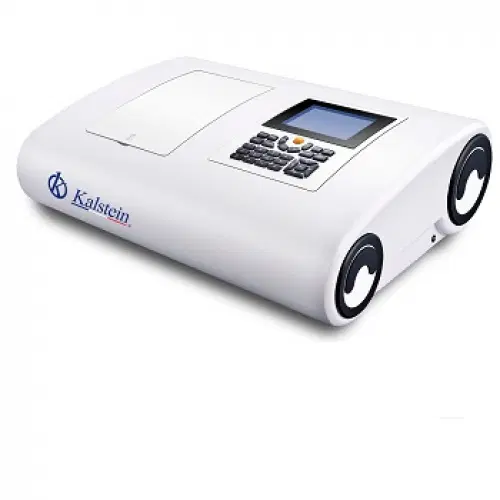Spectrophotometry is a laboratory analysis technique used to analyze and identify chemical compounds in samples. This is achieved by comparing the spectra obtained (i.e., absorbed radiation) from an unknown sample with those of known compounds. This technique is also called spectral detection, and spectrophotometers are used in medicine, life sciences, forensic medicine, and food sciences.
Unlike alternative methods of analysis that rely on the observation of a chemical reaction, spectrophotometry provides information about the chemical compounds in a solution without performing a chemical reaction. Spectrophotometers measure the absorption of electromagnetic radiation by a solution at certain incident wavelengths and radiation.
Based on these measurements, these devices are able to distinguish light from different colors. This is because each chemical compound absorbs light at different wavelengths, a phenomenon known as spectral absorption. This specific absorption, called absorption spectra, enables spectrophotometers to detect and identify a chemical compound.
In which fields is spectrophotometry used?
Spectrophotometry is used to analyze chemical compounds in many different areas. Spectrophotometric applications range from the characterization of human tissues in medicine to the identification of chemical compounds in air, soil and water. This technique is also used to identify common components in chemicals and foods, as well as to measure the nutrient content in foods.
There are several types of spectrophotometry, each with a particular field of application. Magnetic resonance spectrophotometry (MRI) is used to detect hydrogen, carbon, and nitrogen atoms in organic compounds and is used primarily for chemical research. Ultraviolet-visible spectrophotometry (UV-Vis) is used to measure the absorption of ultraviolet and visible light and is widely used for the identification of organic compounds.
Infrared spectrophotometry (IR) measures infrared light absorption, which is used to determine the structure and nature of organic compounds. Fluorescence spectrophotometry (FL) is used to measure the emission of light when excited by ultraviolet light. This technique is mainly used for the analysis of organic compounds.
What aspects should be considered to analyze chemical compounds by spectrophotometry?
The first thing to consider is the choice of the appropriate spectrophotometer, and the wavelength to be used. This usually depends on the type of chemical compound you want to identify. For example, if organic compounds are to be identified, the most commonly used instrument is the nuclear magnetic resonance spectrophotometer, or ultraviolet-visible; for inorganic compounds, infrared or fluorescence spectrophotometry are more appropriate options. After selecting the appropriate instrument, be sure to calibrate it before measuring.
Spectrophotometric devices for analysis of Kalstein samples
Spectrophotometry is a useful technique for chemical analysis. This technique can be used to identify and quantify organic and inorganic compounds in samples, and results can be obtained quickly and accurately. Kalstein, is a manufacturer that provides a variety of spectrophotometers that allow the analysis of various types of samples. HERE
Some of the equipment that the brand has for sale cover a spectral range from 190 nm to 1100 nm, with a low noise level and with a bandwidth of only 2 nm. Details on these devices, as well as purchase and pricing information, can be found at HERE


